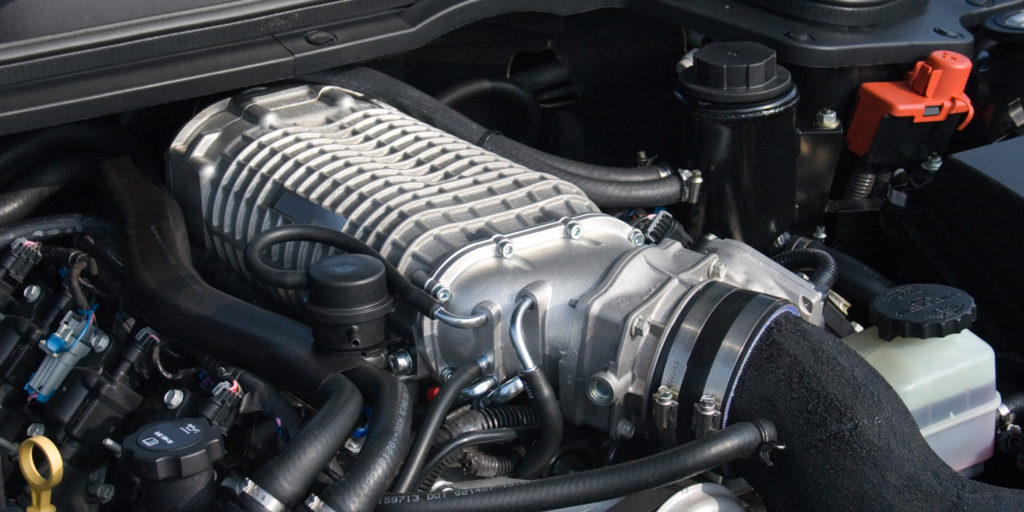Superchargers are synonymous with making horsepower, especially in drag racing, gaining popularity and recognition as a viable power adder. However, they’re not the best option for saving fuel.
While most automakers are currently fascinated with employing turbochargers to make up for lost horsepower due to lower-displacement engines, do superchargers have a place in the current automotive climate? Indeed, this power-adder is more commonly found in the performance arena, because it produces power at lower rpm and comes in a smaller package than a turbocharger. But there are some downsides.
Roots-Style
A roots-style supercharger often is referred to as a “blower,” as it sits atop the intake manifold and blows an air/fuel charge into the cylinders. Roots systems use lobed vanes that pull air into the housing as it’s driven from a belt off the crankshaft. This system makes plenty of power but is less efficient than other types of superchargers. These early systems didn’t have any form of cooling, which was a problem because heat is a factor in any positive-displacement system.
Years ago, it was a lot more challenging to control a supercharged application because they were connected to a carburetor. But carburetors were meant to work with vacuum – not under pressure – so when you introduce charged air, the fuel and air leak like a sprinkler if it’s not tuned just right.
Twin-Screw
People often confuse “roots”-style superchargers with “twin-screw”-type superchargers. The misconception comes from the belief that both superchargers are identical in operating principle and efficiency. But they’re not. The twin-screw concept has been proven to be more efficient than the roots style, with a cooler air charge and lower parasitic loss. More manufacturers prefer the twin-screw today for this reason. Ford used it for its most powerful and prestigious production car ever: the Ford GT. Mercedes has switched to the twin-screw as well as Dodge with its 700-horsepower Hellcat. A Kenne Bell 3.6 twin-screw is employed in all of Shelby’s 750-, 800- and 850-horsepower Super Snakes.
Centrifugal
A centrifugal supercharger doesn’t have counter-rotating rotors but uses a compressor design similar to the turbocharger’s impeller wheel. Boost builds up as rpm increases like a turbo, but throttle response is better. Superchargers are a great power-adder option, as they offer instant throttle response and aren’t as complex to install as turbochargers.
Electric
There is one exciting addition to the supercharger stable, and it comes from Audi. They’ve developed an electric supercharger to be used in conjunction with a twin-turbo setup that virtually eliminates turbo lag. The charger is driven from a 48-volt power supply that feeds a 7-kilowatt electric motor capable of spinning up to 70,000 rpm. The electric supercharger will come on first until the engine reaches the low- to mid-rpm range and the other turbos come into play.
Customers generally look to superchargers for the instant throttle response, not fuel economy. These belt-driven blowers are less efficient than turbos because they use power from the engine to drive it, creating a parasitic loss. Superchargers are easier to install and tune because you don’t have to worry about wastegates and boost controllers, and tricky plumbing. In some cases, you can get 12 to 13 pounds of boost right out of the box from kits available in the aftermarket.













